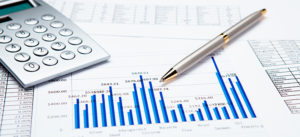
Learn how to create a successful trading plan and put it into action. With a smart plan, you’ll have guidance on which market to trade, when to take profits, when to cut your losses, and where other opportunities could exist.
A trading plan is a comprehensive decision-making tool for your trading activity. It helps you decide what, when and how much to trade. A trading plan should be your own, personal plan – you could use someone else’s plan as an outline but remember that someone else’s attitude towards risk and available capital could be vastly different to yours.
A trading plan is different to a trading strategy, which defines precisely how you should enter and exit trades. An example of a simple trading strategy would be ‘buy bitcoin when it reaches $5000 and sell when it reaches $6000′.
Why do you need a trading plan?
You need a trading plan because it can help you make logical trading decisions and define the parameters of your ideal trade. A good trading plan will help you to avoid making emotional decisions in the heat of the moment. The benefits of a trading plan include:
Figuring out your motivation for trading and the time you’re willing to commit is an important step in creating your trading plan. Ask yourself why you want to become a trader and then write down what you want to achieve from trading. Work out how much time you can commit to your trading activities. Can you trade while you’re at work, or do you have to manage your trades early in the mornings or late at night?
If you want to make a lot of trades a day, you’ll need more time. If you’re going long on assets that will mature over a significant period of time – and plan to use stops, limits and alerts to manage your risk – you may not need many hours a day.
Define your goals
Any trading goal shouldn’t just be a simple statement, it should be specific, measurable, attainable, relevant and time-bound (SMART). For example, ‘I want to increase the value of my entire portfolio by 15% in the next 12 months’. This goal is SMART because the figures are specific, you can measure your success, it’s attainable, it’s about trading, and there’s a time-frame attached to it.
You should also decide what type of trader you are. Your trading style should be based on your personality, your attitude to risk, as well as the amount of time you’re willing to commit to trading. There are four main trading styles:
Position trading: holding positions for weeks, months or even years with the expectation they will become profitable in the long term
Swing trading: holding positions over several days or weeks, to take advantage of medium-term market moves
Day trading: opening and closing a small number of trades in the same day and not holding any positions overnight, eliminating some costs and risks
Scalping: placing several trades per day, for a few seconds or minutes, in an attempt to make small profits that add up to a large amount
Choose a risk-reward ratio
Before you start trading, work out how much risk you’re prepared to take on – both for individual trades and your trading strategy as a whole. Deciding your risk limit is very important. Market prices are always changing and even the safest financial instruments carry some degree of risk. Some new traders prefer to take on a lower risk to test the waters, while some take on more risk in the hopes of making larger profits – this is completely up to you.
It is possible to lose more times than you win and still be consistently profitable. It’s all down to risk vs reward. Traders like to use a risk-reward ratio of 1:3 or higher, which means the possible profit made on a trade will be at least double the potential loss. To work out the risk-reward ratio, compare the amount you’re risking to the potential gain. For example, if you’re risking $100 on a trade and the potential gain is $400, the risk-reward ratio is 1:4.
Look at how much money you can afford to dedicate to trading. You should never risk more than you can afford to lose. Trading involves plenty of risk, and you could end up losing all your trading capital (or more, if you are a professional trader).
